We consult DxOMark’s comprehensive optical test data to find the sharpest lenses for each camera system. Andy Westlake is your guide

Sigma’s 50mm f/1.4 DG HSM Art and the Zeiss Otus 55mm f/1.4: two of the sharpest lenses currently available
A question often posed by photographers is: ‘What’s the sharpest lens I can buy for my camera?’ In reality this can only properly be answered by examining lens tests that have been carried out in a reliable and repeatable way. It’s also a question that needs to be qualified. Do you want a wideangle or a telephoto, a zoom or a prime? What’s your budget? With all this in mind, we decided to provide some kind of sensible answer anyway.
Although we’ve tested more lenses than ever over the past couple of years, we’ve had to accept that even that’s not enough to provide a useful answer. For this reason, we’ve teamed up with DxOMark, one of the most respected names in the photographic industry, to sift through its extensive database of lens-test data in order to pick out the sharpest optics for each major camera system.
About DxOMark
DxOMark is part of the Paris-based company DxO Labs. Its lens and camera tests employ the same home-grown DxO Analyser software that is used to determine the aberration corrections that are an integral part of the firm’s award-winning OpticsPro raw-conversion software. We’ve analysed DxOMark’s sharpness scores for each major camera system to see which lenses come out on top. The lists of the sharpest lenses for each camera system in this article have also been filtered for some degree of affordability, leaving out any lens priced above £2,000. In addition, we’ve only included lenses that are available for sale as new.
It’s worth bearing in mind that even DxOMark’s database isn’t 100% comprehensive, and not all lenses have been tested on all cameras, including several recent third-party optics. However, it follows that if any given lens produces good results on, for example, Canon full-frame models, it should give equally good results on Nikon, Pentax or Sony full-frame cameras. All the data used for this article can be analysed in more detail on the DxOMark website at www.dxomark.com.
A note on modern lens testing
At one time, lens testing used to be carried out using specialist (and expensive) optical benches. However, it’s now much more practical to use a suitable camera body for testing. Thousands of test exposures can be made at essentially no cost, and the raw files analysed to measure sharpness
However, one complication of this approach is that it tests the system as a whole – in other words, the lens and the camera combined. This can still give extremely useful results, but it does have its caveats. In particular, the measurements are influenced by the camera’s sensor, in particular its resolution and optical low-pass filter (OLPF). Higher resolution sensors tend to give higher sharpness measurements, while sensors with no OLPF give higher readings than those without.
Because of this, when looking to compare lenses for sharpness, they really need to have been tested on the same camera body. When comparing across systems, only use tests conducted with similar resolution cameras.
Canon
Full frame (tested on EOS 5DS R)
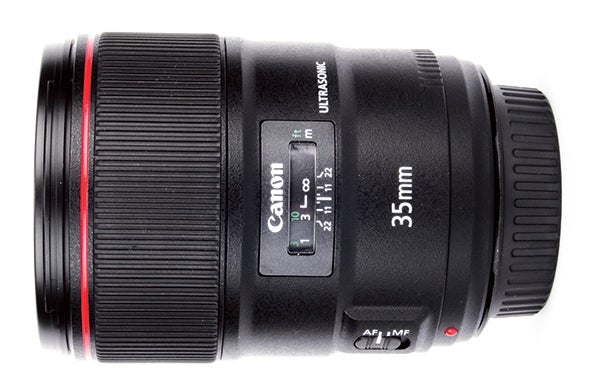
Super sharp: Canon 35mm f/1.4 II USM
Tested on the Canon EOS 5DS R
It should come as no great surprise to learn that the sharpest lens DxOMark has tested on the EOS 5DS R is a premium telephoto prime, the Canon EF 300mm f/2.8L IS II USM. The catch is its £4,799 price tag, meaning that it’s mostly limited to use by professional photojournalists. Also on the rarefied list of premium ultra-sharp optics are Canon’s 600mm f/4 and 400mm f/2.8 telephotos, and Zeiss’s ultra-premium Otus 55mm f/1.4 and 85mm f/1.4 – none of which counts as affordable.
Our list of the sharpest lenses under £2,000 is headed by the manual-focus Zeiss 135mm f/2, while Canon’s own top-ranking optic is the stellar, but pricey, EF 35mm f/1.4L II USM. However, enthusiast photographers will perhaps be more interested by the presence of Sigma’s f/1.4 Art-series primes, which currently sell around the £600 mark. The 50mm scores especially highly, but the 35mm, 20mm and 24mm also perform very well.
Canon’s relatively inexpensive 35mm f/2 IS USM and 24mm f/2.8 IS USM make an appearance. It’s worth noting that some additional stars in terms of value are the sub-£100 EF 50mm f/1.8 STM and the £149 EF 40mm f/2.8 STM, even if they don’t quite make the top-ten list. Turning our attention to zooms, the Tamron SP 70-200mm f/2.8 Di VC USD edges ahead of Canon’s EF 70-200mm f/2.8L IS II USM. However, standard and wideangle zooms aren’t well represented, with Sigma’s impressive 24-35mm f/2 DG HSM Art being the strongest.
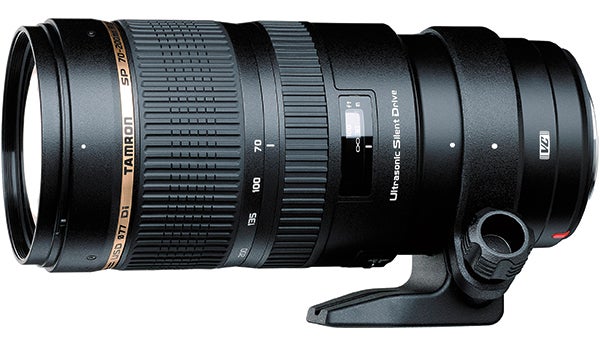
Best zoom: Tamron SP 70-200mm f/2.8
Tested on the Canon EOS 5DS R
Top lenses under £2,000
1. Zeiss Apo Sonnar T* 135mm f/2 ZE
2. Sigma 50mm f/1.4 DG HSM Art
3. Canon EF 35mm f/1.4L II USM
4. Tamron SP 70-200mm f/2.8 Di VC USD
5. Canon EF 35mm f/2 IS USM
6. Sigma 35mm f/1.4 DG HSM Art
7. Sigma 20mm f/1.4 DG HSM Art
8. Canon EF 70-200mm f/2.8L IS II USM
9. Sigma 85mm f/1.4 EX DG HSM
10. Canon EF 24mm f/2.8 IS USM
APS-C (tested on EOS 7D Mark II)

Top value: Canon EF-S 24mm f/2.8 STM
Tested on the Canon EOS 7D Mark II
All the full-frame lenses listed left also give excellent results on APS-C, but how about lenses dedicated to the smaller format?
Here Sigma tops the list with its impressive 18-35mm f/1.8. Its sadly discontinued 50-150mm f/2.8 zooms also scores highly. Samyang’s 16mm f/2 wideangle prime and Canon’s inexpensive compact EF-S 24mm f/2.8 STM are the sharpest primes.
Top lenses under £2,000
1. Sigma 18-35mm f/1.8 DC HSM Art
2. Samyang 16mm f/2 ED AS UMC CS
3. Canon EF-S 24mm f/2.8 STM
4. Tamron SP 17-50mm f/2.8 Di II XR VC LD
5. Sigma 30mm f/1.4 DC HSM Art
6. Canon EF-S 60mm f/2.8 Macro
7. Canon EF-S 17-55mm f/2.8 IS USM
Nikon
Full frame (tested on Nikon D810)
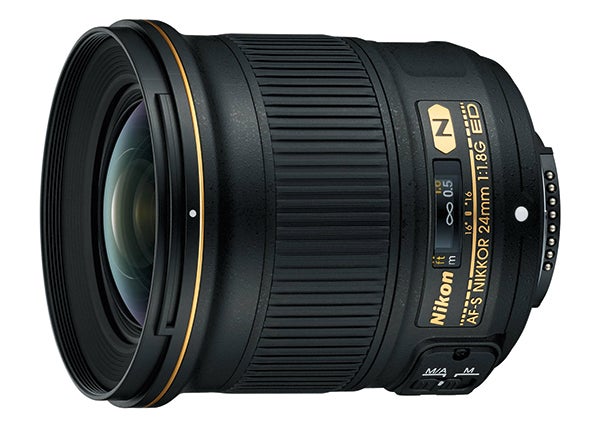
Best wide: Nikon 24mm f/1.8G ED
Tested on the Nikon D810
Much the same as with Canon, the full list of the sharpest lenses for Nikon’s full-frame DSLRs is dominated by expensive primes. It’s headed by Zeiss’s £1,600 135mm f/2 optic, with the highest-placed Nikkor being the AF-S 200mm f/2G ED VR that costs £4,100. Nikon’s 300mm f/2.8 and 400mm f/2.8 professional telephotos are also up there, along with the Zeiss Otus 55mm f/1.4 and 85mm f/1.4 primes. All these cost £2,700 or more, so are unlikely to find their way into many amateurs’ kit bags.
But how about lenses you might actually be able to afford? Again, Sigma’s Art-series primes are strongly represented, with the 50mm f/1.4, 35mm f/1.4 and 24mm f/1.4 all in the top ten. Tamron’s recent SP 35mm f/1.8 Di VC USD also makes the list alongside some nice Nikkor primes, in the shape of the 85mm f/1.4 and the relatively affordable 24mm f/1.8. Two more Zeiss manual-focus primes – the Milvus 50mm f/1.4 and the Distagon 25mm f/2 – complete a wide, normal and telephoto trio alongside that top-ranked 135mm f/2.
The highest-placed zoom is Nikon’s highly regarded AF-S 70-200mm f/4G ED VR, but in practice the Nikon and Tamron 70-200mm f/2.8 lenses are only slightly lower placed. The sharpest non-telephoto zoom tested by DxOMark is the Sigma 24-35mm f/2 DG HSM Art, while the Tamron SP 15-30mm f/2.8 Di VC USD provides strong competition for the legendary Nikon AF-S Nikkor 14-24mm f/2.8G ED in the wideangle arena.
Top lenses under £2,000
1. Zeiss Apo Sonnar T* 135mm f/2 ZF
2. Sigma 50mm f/1.4 DG HSM Art
3. Zeiss Milvus 50mm f/1.4 ZF.2
4. Sigma 35mm f/1.4 DG HSM Art
5. AF-S Nikkor 24mm f/1.8G ED
6. AF-S Nikkor 85mm f/1.4G
7. Zeiss Distagon 25mm f/2 ZF.2
8. AF-S Nikkor 70-200mm f/4G ED VR
9. Tamron SP 35mm f/1.8 Di VC USD
10. Sigma 24mm f/1.4 DG HSM Art
DX (tested on Nikon D7100)
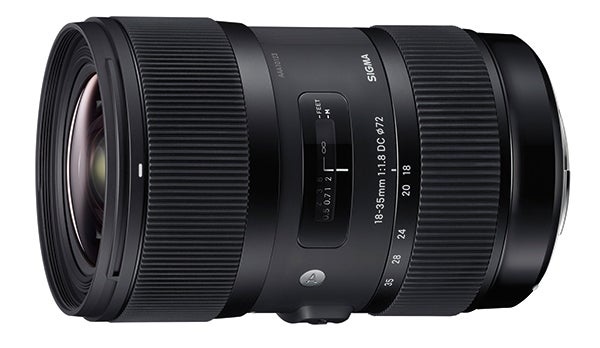
Fast fast zoom: Sigma 18-35mm f/1.8 Art
Tested on the Nikon D7100
Looking at lenses specifically designed for the smaller DX sensor, we see Sigma taking three of the four top spots. Its stunning 18-35mm f/1.8 ultra-fast zoom deservedly comes out on top, with the 30mm f/1.4 fast normal prime a close second, and the versatile 17-50mm f2.8 optically stabilised zoom also acquitting itself highly.
Tamron also gets in on the game with its somewhat underrated 60mm f/2 Macro, which can double up nicely as a portrait lens, and its own 17-50mm f/2.8 image-stabilised zoom, which is a close match to the Sigma.
Nikon’s own sharpest DX lens, according to DxOMark’s tests, is the quite inexpensive Micro-Nikkor 40mm f/2.8G, which costs just £200. With 1:1 magnification it’s a good option for DSLR users on a budget. Meanwhile, the DX 35mm f/1.8G fast normal prime is even more affordable at around £150. Another great budget option for Nikon DX users is the AF-S 50mm f/1.8G, which makes for a nice short telephoto ‘portrait lens’, and of course also works on full-frame cameras.
Top lenses under £2,000
1. Sigma 18-35mm f/1.8 EX DC HSM Art
2. Sigma 30mm f/1.4 EX DC HSM Art
3. Nikon AF-S DX Micro-Nikkor 40mm f/2.8G
4. Sigma 17-50mm f/2.8 EX DC OS HSM
5. Tamron SP AF 60mm f/2 Di II LD IF Macro
6. Tamron AF 17-50mm f/2.8 Di II XR VC LD
7. Nikon AF-S DX Nikkor 35mm f/1.8G
Pentax
Full frame
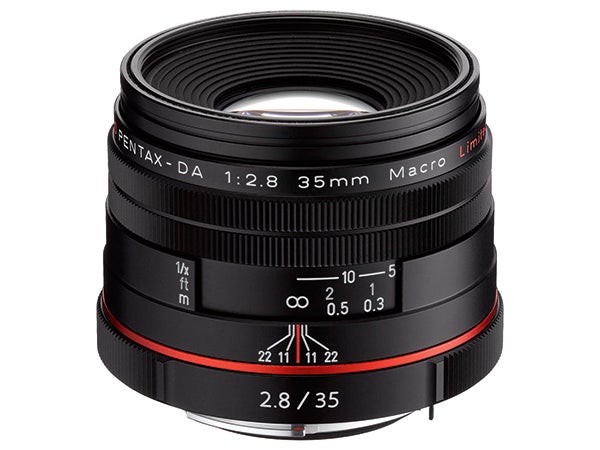
Great macro: Pentax 35mm f/2.8 Macro
Tested on the Pentax K-3
DxOMark hasn’t, at the time of writing, published lens test results using the full-frame Pentax K-1. However, it’s clear that the Pentax 15-30mm f/2.8 and 24-70mm f/2.8 zooms are strongly related to Tamron designs that test very well on other full-frame cameras, so the omens are very good for these. As for how its other lenses behave on full frame, we’ll just have to wait and see. In the meantime, we’ve included all the Pentax-compatible lenses DxOMark has tested, both full frame and APS-C, in the list to the right.
APS-C (tested on Pentax K-3)
Pentax has easily the most comprehensive lens range tailored specifically for APS-C DSLRs, but it also has the least support from third-party makers, with neither Tamron nor Tokina manufacturing K-mount versions of its lenses. The list of sharpest lenses reflects this, with plenty of Pentax’s compact DA-series primes included. Users on a budget will be pleased to see both the DA 50mm f/1.8 and the DA 35mm f/2.4, both of which can be found for under £100.
However, a couple of Sigma optics sit proudly at the top of the pile, in the shape of the 35mm f/1.4 and the 17-50mm f/2.8. Some full-frame-compatible D FA lenses also appear, such as the 50mm f/2.8 Macro, as do a couple of Samyang’s high-quality full-frame, manual-focus primes. Both of its 24mm f/1.4 and 85mm f/1.4 primes cover full frame, and offer impressive image quality for their sub-£300 price tags.
Top lenses under £2,000
1. Sigma 35mm f/1.4 DG HSM Art
2. Sigma 17-50mm f/2.8 EX DC HSM
3. Pentax HD DA 35mm f/2.8 Macro Limited
4. Samyang 85mm f/1.4 Asph IF
5. Pentax SMC DA 50mm f/1.8
6. Pentax SMC D FA 50mm f/2.8 Macro
7. Pentax SMC FA 50mm f/1.4
Fujifilm

Fujifilm’s XF lens range is generally excellent; this 90mm f/2 is particularly sharp
DxOMark hasn’t tested any of Fujifilm’s X-system lenses to date. The reason for this is essentially pragmatic; the DxO Analyser test software doesn’t understand the unique X-Trans colour filter array that Fujifilm uses in the majority of its cameras.
Fujifilm’s lens range is extensive and unusually coherent; indeed it’s probably the best thought-through of all APS-C systems. The lenses are of generally very high optical quality, too. Third-party support includes a few manual-focus Samyang optics, including the 50mm f/1.2 and 32mm f/1.4 that we tested earlier this year and liked very much, and Zeiss’s premium Touit line. Of these, the 12mm f/2 wideangle and 50mm f/2 1:1 macro have no direct equivalent from Fujifilm itself.
Sony Alpha
Full frame (tested on Sony Alpha 99)
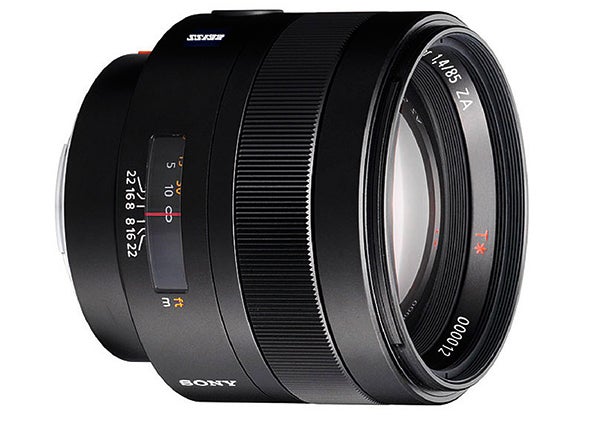
Portrait magic: Sony 85mm f/1.4
Tested on the Sony Alpha 99
Sony’s attention may have switched more towards its E-mount Alpha 7 series over the past couple of years, but the A-mount system it originally inherited from Minolta is still very much supported, with a decent native lens range and plenty of third-party options, too.
So users of Sony’s DSLRs and more recent electronic viewfinder DSLT cameras still have plenty of good lenses to choose from.
A couple of Sigma optics top the list of sharpest lenses according to DxOMark’s tests, where it’s no surprise to see the latest incarnation of the excellent 105mm f/2.8 Macro alongside the 35mm f/1.4 Art. Sony’s own lenses are well represented, too, headed by the stellar Zeiss Planar 85mm f/1.4. Three 24-70mm f/2.8 lenses are included from Sony, Sigma and Tamron, in that order, although in reality there’s little to separate them in terms of sharpness.
Some older lenses appear on this list as well: the 50mm f/1.4, 50mm f/2.8 Macro and 100mm f/2.8 Macro are all based on Minolta designs. This may seem surprising, but to a great extent it reflects the fact that while older lenses tend to be less sharp wide open, the difference is less marked when they’re stopped down to their sharpest apertures.
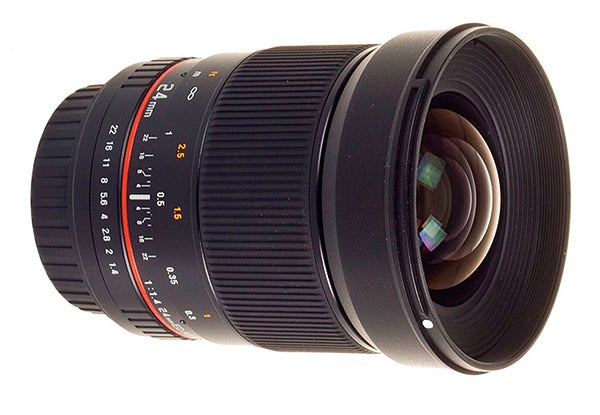
Manual marvel: Samyang 24mm f/1.4
Tested on the Sony Alpha 99
Top lenses under £2,000
1. Sigma 35mm f/1.4 DG HSM Art
2. Sigma 105mm f/2.8 EX DG OS Macro HSM
3. Sony Zeiss Planar 85mm f/1.4 ZA
4. Sony 50mm f/1.4
5. Samyang 24mm f/1.4 ED AS UMC
6. Sony Vario-Sonnar T* 24-70mm f/2.8 ZA SSM II
7. Sigma 24-70mm f/2.8 EX DG HSM
8. Sony 100mm /2.8 Macro
9. Tamron SP 24-70mm f/2.8 Di USD
10. Sony 50mm f/2.8 Macro
APS-C (tested on Sony Alpha 77)
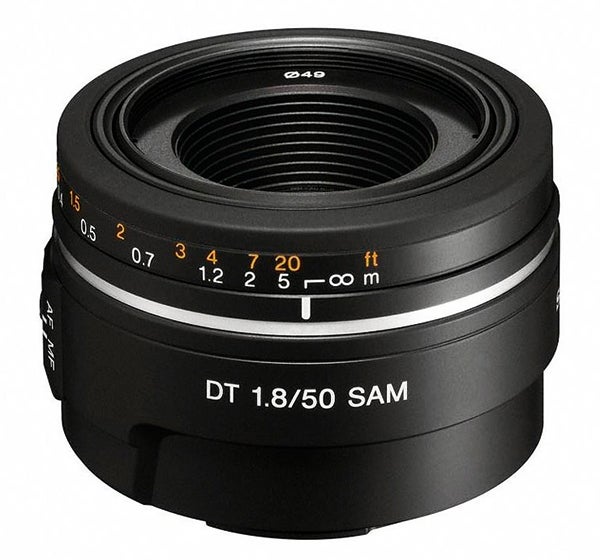
Fast & sharp: Sony DT 50mm f/1.8 SAM
Tested on the Sony Alpha 77
Looking at Alpha-mount lenses designed specifically for APS-C cameras, Sony’s budget range of SAM primes perform really rather well. The 35mm f/1.8, 50mm f/1.8 and 30mm f/2.8 Macro all represent remarkable value at under £150 each. Two highly regarded standard zooms, the 16-80mm f/3.5-4.5 and 16-50mm f/2.8, essentially tie with each other in terms of sharpness.
Leading third-party options again include the Tamron 60mm f/2 Macro, with Samyang’s manual-focus 16mm f/2 wideangle prime also making an appearance. This reiterates the generally fine optical performance of this Korean lens maker’s designs, while the lack of autofocus is perhaps least problematic with a wideangle lens.
Top lenses under £2,000
1. Sony DT 50mm f/1.8 SAM
2. Sony DT 35mm f/1.8 SAM
3. Tamron SP AF 60mm f/2 Di II LD IF Macro
4. Sony DT 30mm f/2.8 Macro SAM
5. Samyang 16mm f/2 ED AS UMC CS
6. Sony Vario Sonnar T* DT 16-80mm f/3.5-4.5 ZA
7. Sony DT 16-50mm f/2.8 SSM
Sony E-mount
Full frame (tested on Sony Alpha 7R)
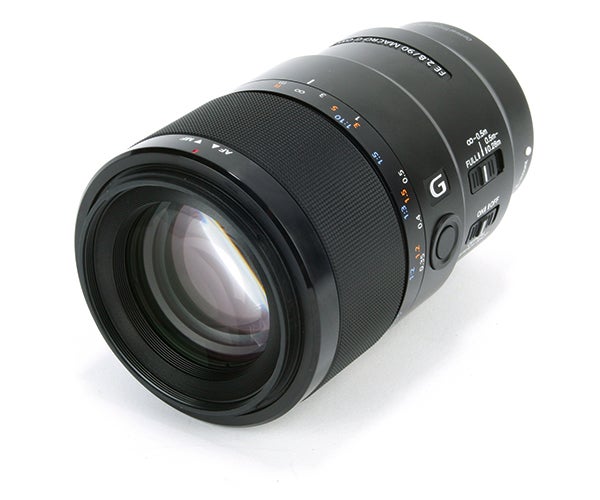
Pin sharp: Sony 90mm f/2.8 Macro
Tested on the Sony Alpha 7R
Sony’s FE range for its full-frame Alpha 7 mirrorless cameras is less than three years old, but it’s starting to fill out nicely. Meanwhile, Zeiss’s autofocus Batis and manual-focus Loxia ranges both feature premium optics. As a result, there are some exceptionally sharp lenses available, benefiting from all the latest advances in optical design.
Top of the list is the exceptional Sony 90mm f/2.8 Macro, which is one of the very sharpest lenses we’ve ever tested. The 55mm f/1.8 that follows it is barely less impressive. The quality of Zeiss’s contribution is confirmed by the presence of its Batis 85mm f/1.8 telephoto and Loxia 21mm f/2.8 wideangle. Perhaps most interesting is how the relatively lowly £379 Sony FE 28mm f/2 slots into fifth place, marginally ahead of the Sony FE 35mm f/1.4. And while the premium 24-70mm f/2.8 G Master optic only comes in tenth, this simply reflects the excellence of the other lenses.
Top lenses under £2,000
1. Sony FE 90mm f/2.8 Macro G OSS
2. Sony FE Zeiss Sonnar T* 55mm f/1.8 ZA
3. Zeiss Batis 85mm f/1.8
4. Zeiss Loxia 21mm f/2.8
5. Sony FE 28mm f/2
6. Sony FE Zeiss Distagon T* 35mm f/1.4 ZA
7. Sony FE 70-200mm f/4 G OSS
8. Zeiss Batis 25mm f/2
9. Sony FE Carl Zeiss Sonnar T* 35mm f/2.8 ZA
10. Sony FE 24-70mm f/2.8 GM
APS-C (tested on Sony Alpha 6000)
Sony’s APS-C E-mount lens range may not be the largest but it covers all the main bases and includes a good selection of high-quality small primes. With a smattering of third-party options also available from Sigma and Zeiss, enthusiast photographers will find that there’s plenty to choose from without breaking the bank. Indeed, the sharpest lens on DxOMark’s list, the Sigma 60mm f/2.8 DN A, costs a mere £120. Even the fast Sigma 30mm f/1.4 DC DN C can be bought for less than £250.
Among Sony’s own optics it’s no great surprise to see the premium Zeiss-branded 24mm f/1.8 topping the list, but at £679 it’s difficult not to feel it should do even better.
The two lenses below it offer the distinction of being the fastest image-stabilised lenses in the system, and both the 35mm f/1.8 OSS and 50mm f/1.8 OSS are quite affordable, too, at around £320 and £200 respectively. The top-placed zoom here is the somewhat video-focused 18-105mm f/4 powerzoom, although its range makes it an interesting option for stills photographers, too.
Top lenses under £2,000
1. Sigma 60mm f/2.8 DN Art
2. Sigma 30mm f/1.4 DC DN Contemporary
3. Sony Zeiss Sonnar T* E 24mm f/1.8 ZA
4. Zeiss Touit 32mm f/1.8
5. Sony E 50mm f/1.8 OSS
6. Sony E 35mm f/1.8 OSS
7. Sigma 19mm f/2.8 EX DN
8. Sony E PZ 18-105mm f/4G OSS
9. Sigma 30mm f/2.8 DN Art
10. Sony E 20mm f/2.8
Micro Four Thirds
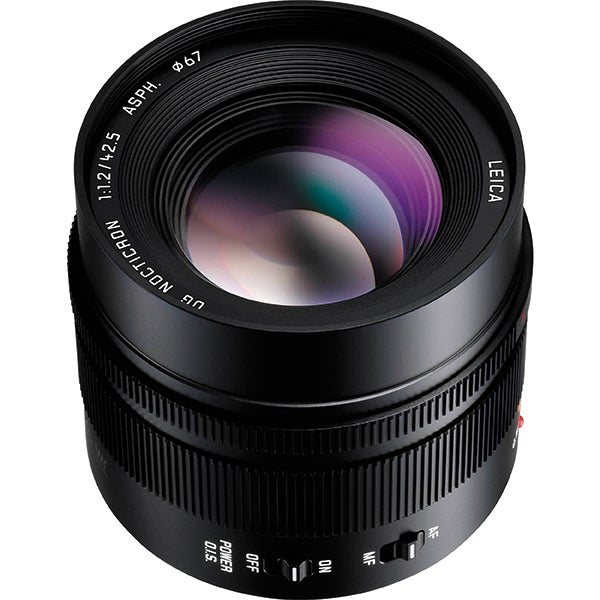
Super fast: Panasonic 42.5mm f/1.2
Tested on the Olympus E-M1
When it comes to choosing the very sharpest lenses for Micro Four Thirds, two specialist portrait primes top the pile. Panasonic’s 42.5mm f/1.2 OIS, which at £1,100 is one of the most expensive lenses made for Micro Four Thirds, marginally edges the Olympus 75mm f/1.8, which costs about half the price.
The next section of the field comprises a cluster of fast primes covering the 15mm to 30mm range. While it’s no surprise to see a couple more Panasonic Leica-branded primes here, its cult classic 20mm f/1.7 pancake also makes an appearance. This tiny, relatively inexpensive lens may be one of the oldest still available for Micro Four Thirds, but it’s also one of the best in terms of image quality.
Olympus fans may be dismayed that its lenses aren’t overly strongly featured here, with the 60mm f/2.8 Macro appearing next, essentially tying with Sigma’s much cheaper but non-macro 60mm f/2.8. However, some of the firm’s more recent lenses, including the highly regarded 40-150mm f/2.8 PRO, haven’t yet been tested by DxOMark. We’d expect it to compete very closely with the Panasonic 35-100mm f/2.8 OIS for sharpness, which is the only zoom on this list.
Top lenses under £2,000
1. Panasonic Leica DG Nocticron 42.5mm f/1.2 Asph OIS
2. Olympus M.Zuiko Digital ED 75mm f/1.8
3. Panasonic Leica Summilux DG 25mm f/1.4
4. Panasonic Leica DG 15mm f/1.7 Asph
5. Sigma 30mm f/1.4 DC DN C
6. Panasonic Lumix G 20mm f/1.7 II Asph
7. Olympus M.Zuiko Digital ED 60mm f/2.8 Macro
8. Sigma 60mm f/2.8 DN Art
9. Panasonic Lumix G 35-100mm f/2.8 OIS
10. Olympus M.Zuiko Digital ED 12mm f/2
Summary
So, after all this, what have we learned? Well, first, if it’s out-and-out sharpness you’re after, it’s still better to buy primes rather than zooms. This is despite the fact that modern zooms are very good indeed, and noticeably better than those made 10 or 20 years ago. However, all of the same design and manufacturing advances that have enabled this advance have also been applied to primes, allowing them to maintain their optical edge.
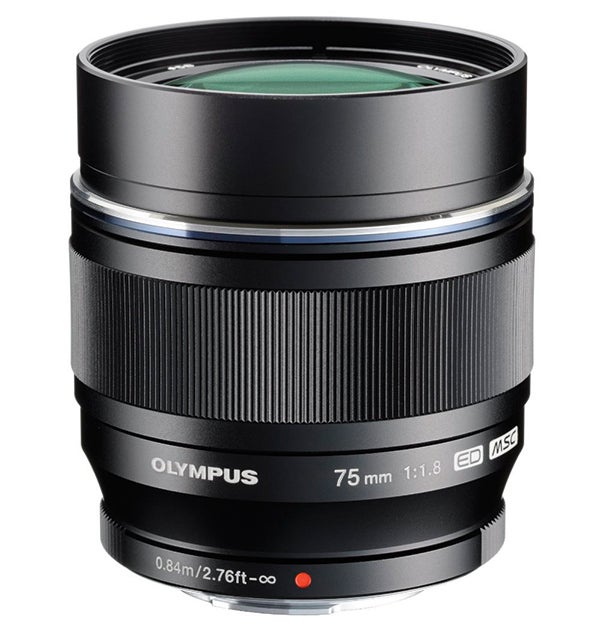
Olympus’s M.Zuiko Digital ED 75mm f/1.8 is one of its sharpest Micro Four Thirds lenses
Equally, on the whole you get what you pay for; it’s no coincidence that many of the sharpest lenses are not just the most expensive, but also the largest and heaviest. Quite simply, this allows the optical designers to make the fewest compromises. Indeed, the very best modern lenses exemplified by the Zeiss Otus 55mm f/1.4 and the Sigma 50mm f/1.4 DG HSM A are very much larger and more complex than their older equivalents.
That said, the differences compared with smaller, cheaper options are often towards the extremes of the lens’s performance, relating to sharpness at large apertures or towards the edges of the frame. These are enough to make a difference for sure, but might only be visible if you’re displaying your images really large.
Because of this, it’s still possible for enthusiast photographers to get excellent results from some comparatively inexpensive primes. For many DSLR users, the 50mm f/1.8 is still a great choice for excellent sharpness at a bargain price. APS-C users should also look at some wider options, for example Nikon’s and Sony’s 35mm f/1.8 optics, the Pentax 35mm f/2.4 or Canon’s 24mm f/2.8 STM. Likewise, most mirrorless systems have compact fast primes that are a real step up from kit zooms. Of course, apart from better sharpness, they also have much larger maximum apertures for low-light shooting.
Naturally, buying a sharper lens is still only part of the story, and won’t get you better pictures without learning and applying good photographic technique. But if you take on board everything else covered in this issue, it should get you well on the way to making the sharpest pictures your camera is capable of recording.




